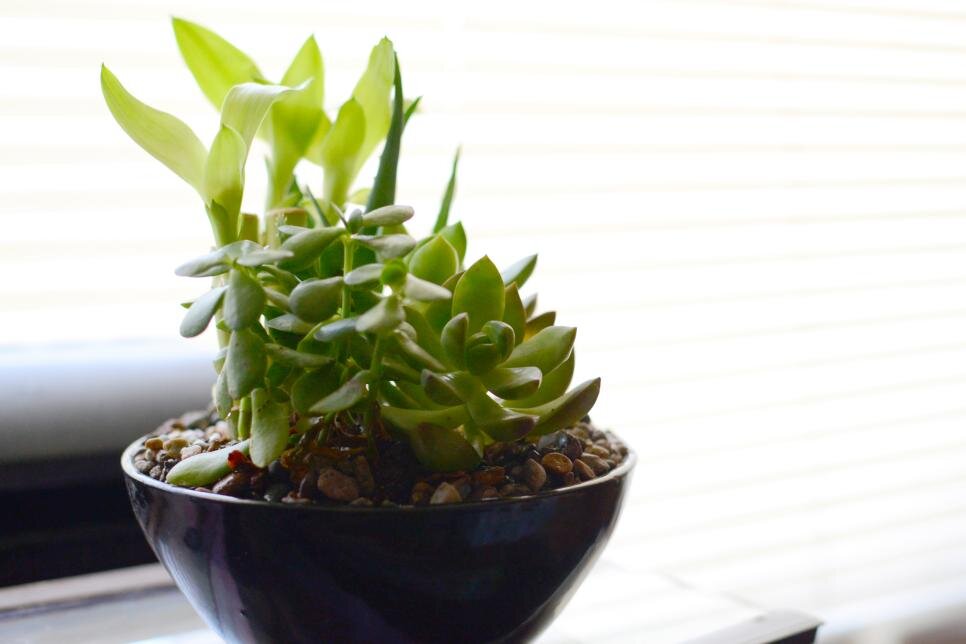Top 6 Indoor Plants That Are Hard To Kill
For a gardener, indoor plants are a delight to watch. You will love to have these plants as they are not just refreshing but they come up with a lot of real benefits! Furnishing your house with a bit of green can do miracles for your body, mind, and soul. They can purify your air and help to decrease stress and anxiety. Above all, they provide a great spectacle for the eyes!
Some of the plants need more attention; while others hard to kill indoor plants will grow as far as some fundamental care rules are employed. Let us take a closer look at the best indoor plants that are hard to kill and find the steps to maintain their survival.
Air-Plant – Tillandsia spp.
Air-plant is a small plant that doesn't require soil to grow. You can fix them to a wooden piece, fasten them on a rope, or simply set them in a vacant bowl. Rather, they'll connect themselves to things like trees or rocks. As the name implies, these plants need air to flourish so don't stuff them. Protect them from the full sun. If the air in your home is dry, fog them with a shower bottle once or twice a week. Water them regularly and then pop them back in their right position. They are ideal for people with insignificant space.
Mother-In-Law’s Tongue
It has a strange name but we cannot complain about it. This sculptural, small and gorgeous plant needs insignificant subsistence. The best thing about this part of a Sansevierias family is that it thrives for more than a month without any water. It comprises of solid, towering leaves and has many shapes and sizes. It needs a little sunlight and love to be watered when the soil is dry.
Overwatering may result in the drowning of the plant. Rather than watering straight into the center of the plant, water it around the corners of its pot. Gardeners can easily propagate it by drawing away from a clump to a new pot when they get bigger. When the plant is large enough, you can also propagate it by pulling away from a clump and placing it in a new pot. Mother-in-law’s tongue is ideal if you’re the lively gardener.
Cast Iron Plant (Aspidistra elatior)
Cast Iron is also known as a ballroom plant. It is capable of resisting huge amounts of neglect and therefore it is named after a metal. It is a type of lily that provides loads of deep green foliage. One more reason for its fame is that it asks for very little care. It can grow in drought, dust, poor soil, and additionally does not demand a lot of light. They will flourish with irregular watering and a low level of light is fine.
Peace Lily – Spathiphyllum spp.
Often referred to as a 'closet plant', gardeners can effortlessly flourish these in their indoor gardens. Due to its fabulous nature of air purifying, peace Lily can clarify harmful toxins from the air. Similar to the other plants, they also love a bit of low light. They can develop up to 6 feet tall. When you notice that the leaves have started weakening, water them. However, most of them are killed by overwatering than under-watering. Do not overwater these plants as these are drought tolerant.
Ponytail Palm – Beaucarnea recurvata
Ponytail Palm has been in demand due to its increased fame in the recent past. Although the name poorly resembles a ponytail, this plant is a succulent, not a palm tree. It has a bulb-like trunk and smooth wavy leaves. It thrives freely in most situations.
From low humid areas of the indoor environment to the dry conditions, they adjust their growth very smartly. Only one-time watering is needed throughout the winter season. They love a bit of bright light and remain healthy and happy on being fertilized, once a year.
. Jade Plant (Crassula Ovata)
Jade Plant is also known as "money plant" as they are comfortable to look after and survive long if handled with love. They present a unique look with its fat fleshy leaves. They are often associated with cactus because of its ability to hold plenty of water in its leaves. They are a member of the succulent family and thrive for a longer period in comparison to the other indoor plants.
They demand a sunny place and make the soil dry before the next watering. Take special care of the roots as they rot quickly and fall out of the pot. A few gardeners feel lucky to have this in their houses. Some religions think that this plant will bring good omen to your house.
Conclusion
These days, many indoor plants are hard to kill. These can cheer up your mood, improve your living area, and can give you a rest from your everyday chores. So if you had a bad experience before, do not give up on your idea of getting another indoor plant because of its innumerable benefits. If you know some other hard to kill houseplants, do share them in the comments below. You are our motivation!






